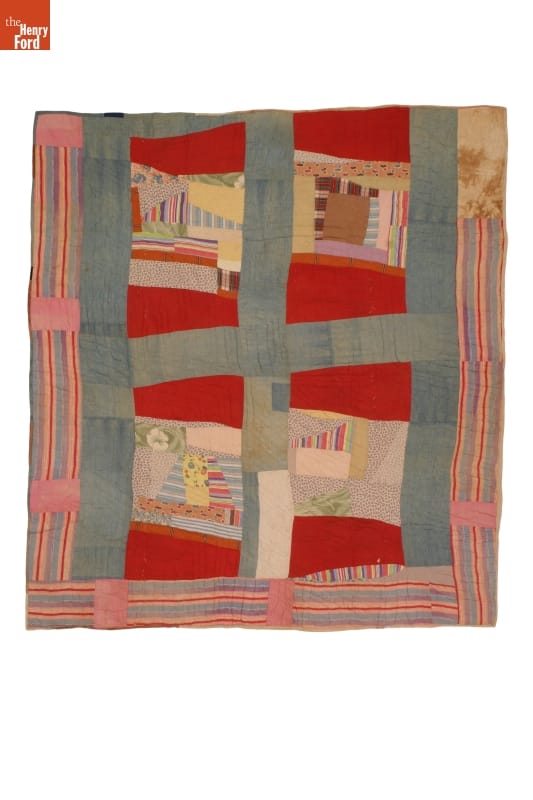Art from Everyday Life

African-American quiltmaker Susana Allen Hunter turned the "fabric" of everyday life into eye-catching quilts with an abstract, asymmetrical, and often, modern feel. Created from the 1930s to the 1970s, Susana Hunter's quilts reflect her life in rural Wilcox County, Alabama—one of the poorest counties in the United States.

Strip Quilt by Susana Allen Hunter, 1950-1955. THF73619
Susana Hunter made handsome, unique quilts, fashioned literally from the fabric of everyday life.
Susana's quilts are pieced in a design-as-you-go improvisational style found among both blacks and whites in poorer, more isolated pockets of the rural South. People living in these more remote areas had less access to quilt pattern ideas published in newspapers or printed in books. For fabrics, rural women depended on mail order catalogs or whatever was available in the local store. These "constraints" left quiltmakers like Susana Hunter free to use their imaginations. 
Bedsheet Pieced Together from Commercial Sugar Sacks by Susana Allen Hunter, 1930-1970. THF94355
Making an improvisational quilt top required a continual stream of creativity during the entire process, as the quiltmaker made hundreds of design decisions on the fly, fashioning an attractive whole out of whatever materials were at hand. Overall visual impact mattered most—not minor details such as whether a patch in a row had a square or rectangular shape. Size and shape was determined by the scraps available at the time.

Sewing Thimble Used by Susana Allen Hunter, 1930-1969. THF93486
Handmade Fan Used by Susana Allen Hunter. THF44759
For Susana and her husband Julius, life often meant hard work and few resources. The Hunters were tenant farmers who grew cotton and corn, tended a vegetable garden, and raised hogs, chicken and cattle. They lived in a simple, two-room house that had no running water, electricity or central heat. The outside world came to them through a battery-powered radio and a wind-up phonograph. Though the Hunters didn't have much in the way of material goods or the latest 20th century technology, they never went hungry, raising much of their own food.

Portrait of Susana Allen Hunter, June 1960. THF125834
Susana Hunter wanted all of her quilts to be different. Some of her quilt designs have a warm, homey feel. Many resemble abstract art. Other quilts pulsate with the visual energy created by many small, irregular pieces of vividly-colored fabric sewn together. Still others incorporate cornmeal or rice sacks, often reserved for quilt backing, as part of the design of the carefully-pieced quilt top.Susana's quilts warmed her family during chilly Alabama winters in the inadequately heated home. They added splashes of color to the unadorned living space—a cheerful kaleidoscope of vivid pattern and design against newspaper-covered walls. Susana very rarely bought new fabric for her quilts, she used what was at hand. Yet the lack of materials didn't restrict this resourceful quilter's creativity. Susana Hunter could cast her artistic eye over her pile of worn clothing, dress scraps, and left-over feed and fertilizer sacks—and envision her next quilt.
Jeanine Head Miller is Curator of Domestic Life at The Henry Ford.
20th century, Alabama, women's history, quilts, making, design, by Jeanine Head Miller, African American history


Facebook Comments